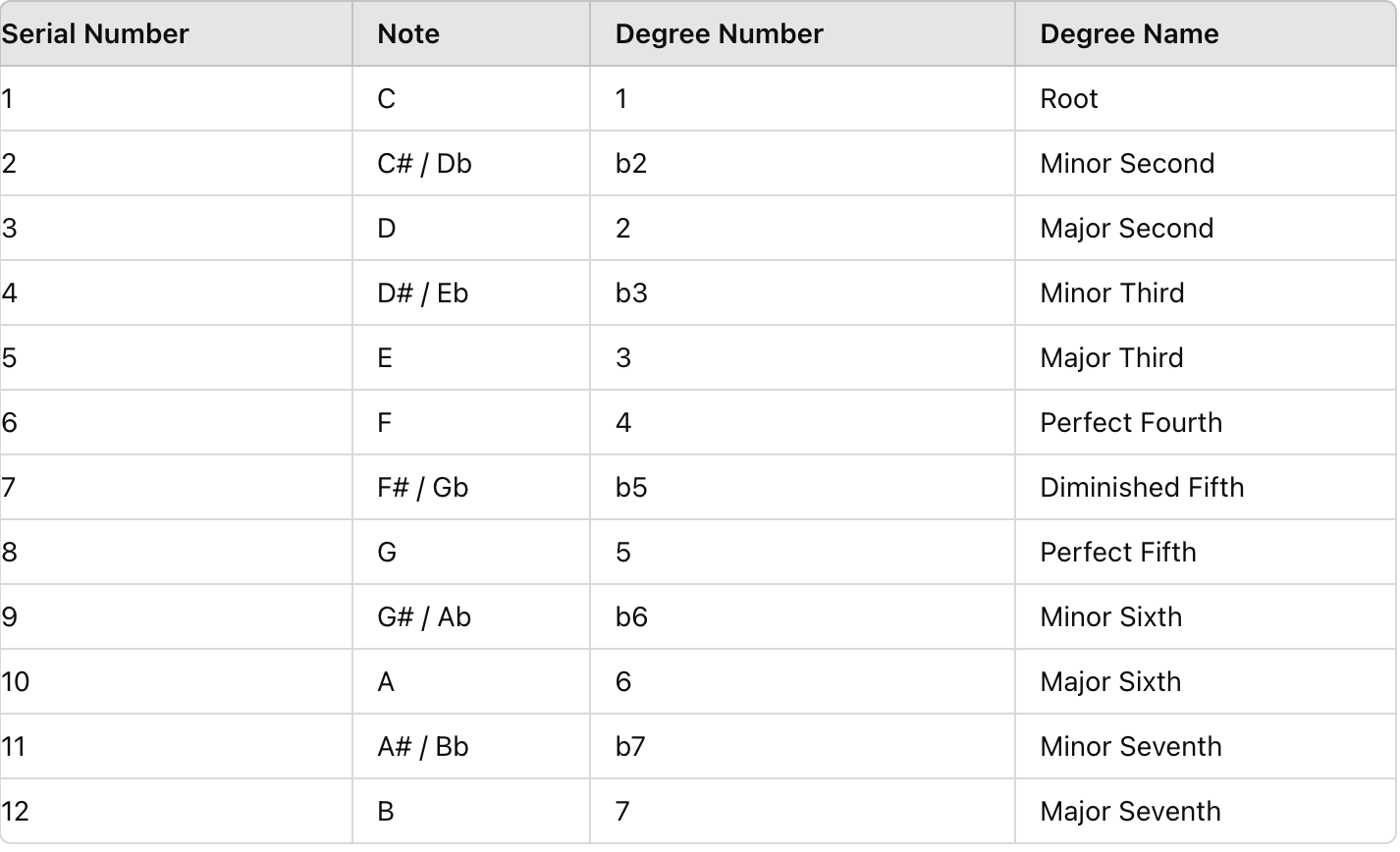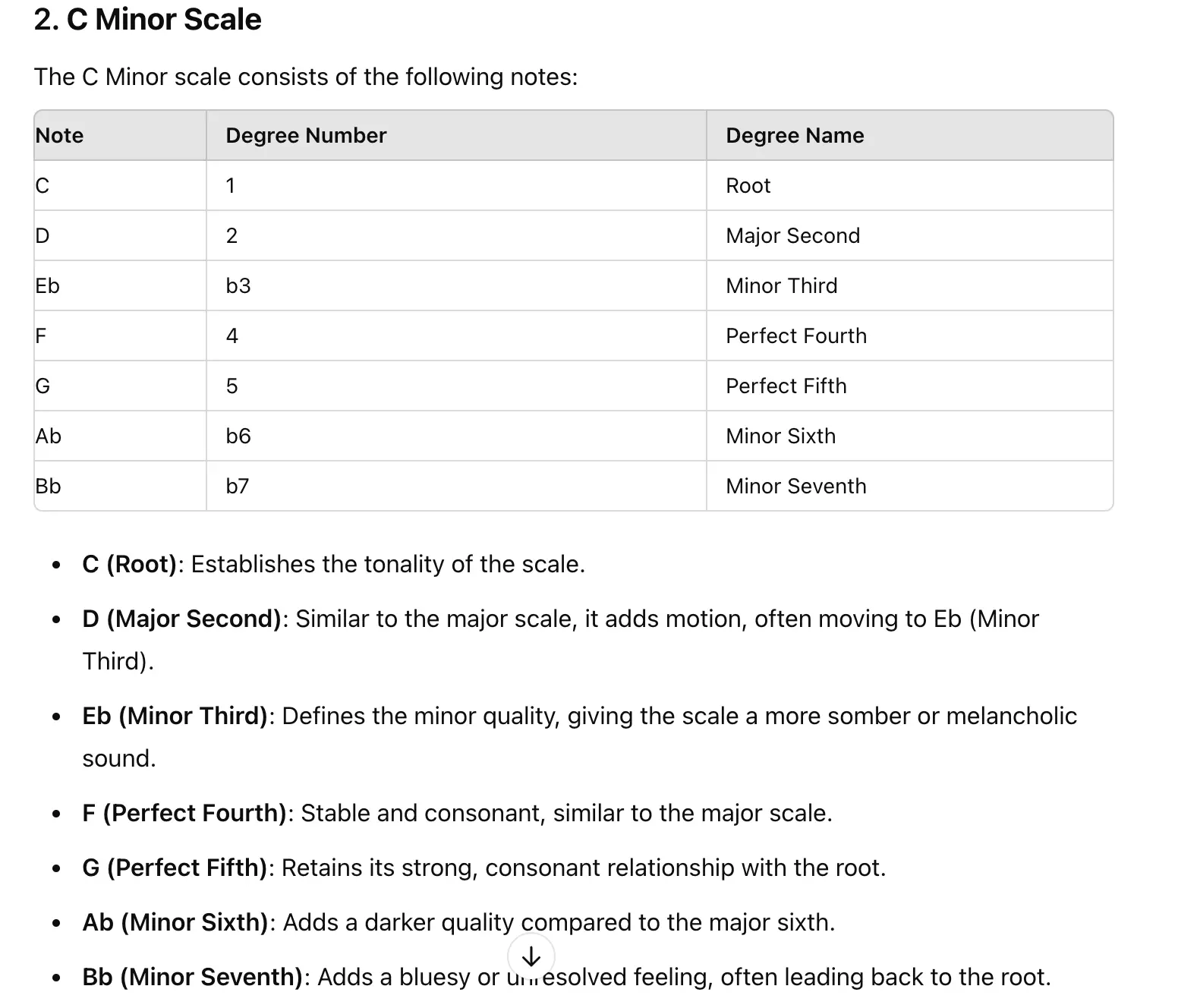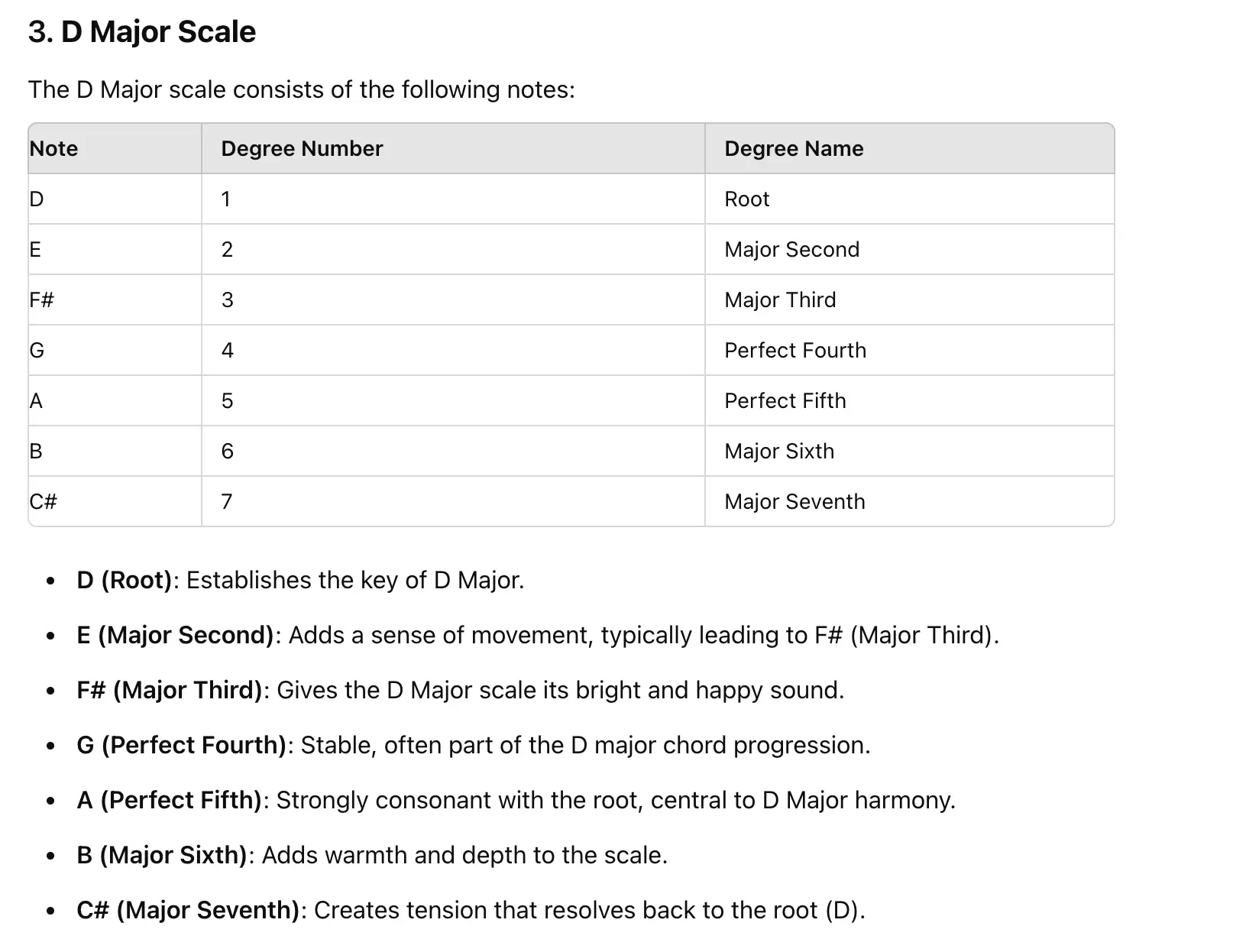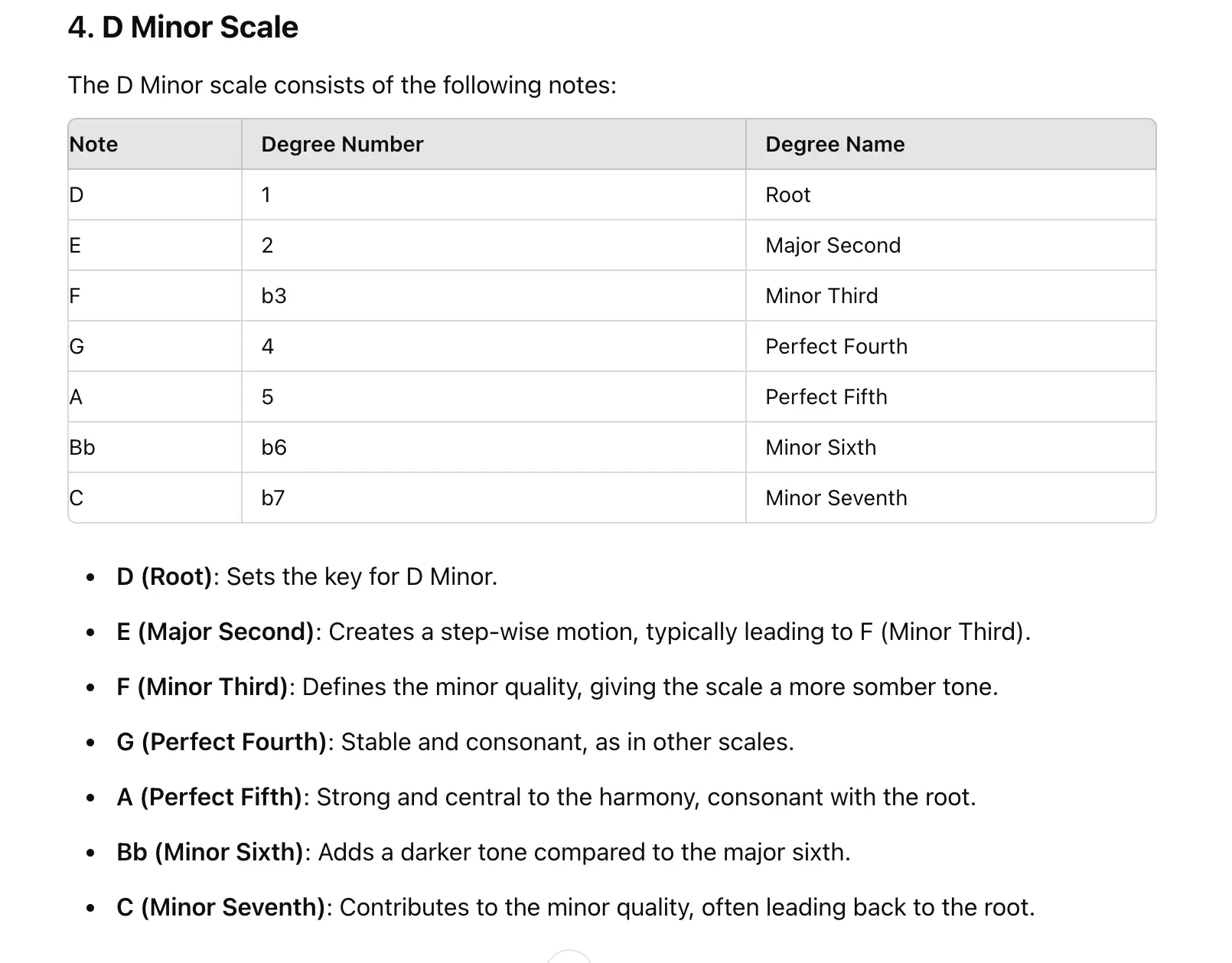Music Degree Terms

Detailed Explanation:
- C (1 - Root):
- The starting note of the scale.
- Represents the tonic or "home" note in any key.
- C# / Db (b2 - Minor Second):
- A half step above the root.
- Creates tension, often used in dissonant chords.
- D (2 - Major Second):
- A whole step above the root.
- Common in melodies and scales, gives a sense of motion.
- D# / Eb (b3 - Minor Third):
- A minor third above the root.
- Defines a minor chord, giving a sadder or more somber tone.
- E (3 - Major Third):
- A major third above the root.
- Defines a major chord, giving a brighter or more cheerful sound.
- F (4 - Perfect Fourth):
- A fourth above the root.
- Stable and consonant, often used in harmonies.
- F# / Gb (b5 - Diminished Fifth):
- A diminished fifth above the root, also known as the tritone.
- Creates tension, often resolved to more stable intervals.
- G (5 - Perfect Fifth):
- A fifth above the root.
- Strong and consonant, forms the foundation of power chords.
- G# / Ab (b6 - Minor Sixth):
- A minor sixth above the root.
- Adds a darker, more dramatic feel to music.
- A (6 - Major Sixth):
- A major sixth above the root.
- Melodically rich, often used in love songs and jazz.
- A# / Bb (b7 - Minor Seventh):
- A minor seventh above the root.
- Adds a bluesy or jazzy quality, commonly used in dominant seventh chords.
- B (7 - Major Seventh):
- A major seventh above the root.
- Creates a dreamy or unresolved feeling, often used in jazz and modern harmonies.





Degree Name in western Music